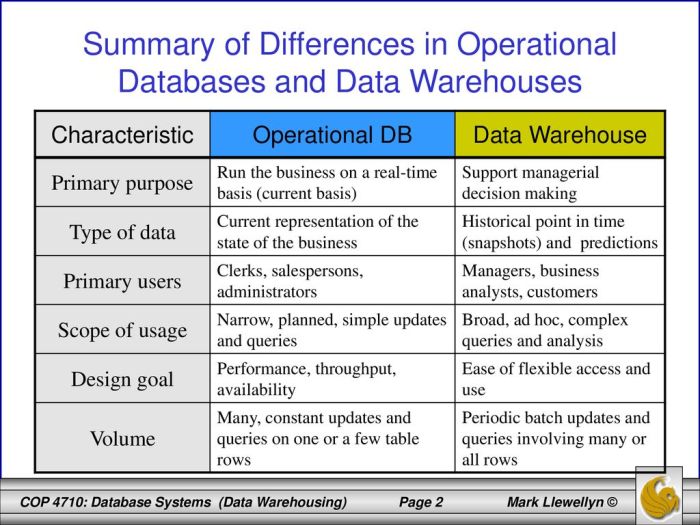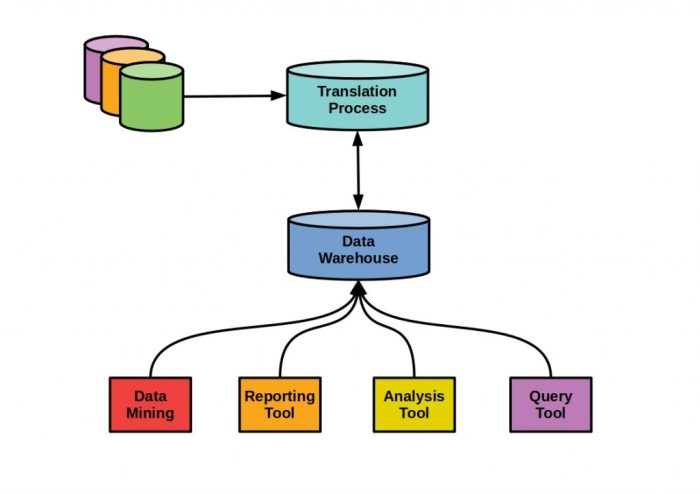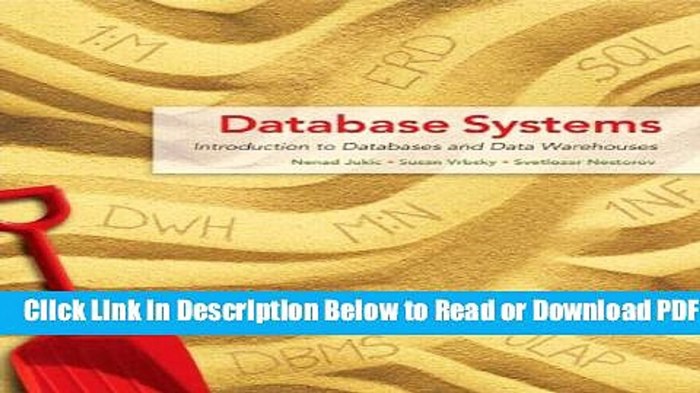Database systems introduction to databases and data warehouses edition 2.0, a comprehensive guide to the fundamentals of database systems, offers an in-depth exploration of data models, database management systems (DBMSs), data warehousing, and more. This updated edition provides a thorough understanding of the essential concepts and practices of database systems, empowering readers to effectively manage and utilize data for various applications.
Delving into the intricacies of data models, the book elucidates the hierarchical, network, relational, and object-oriented models, highlighting their advantages and disadvantages. It then delves into the role of DBMSs in managing and accessing data, comparing open-source and commercial systems.
The concept of data warehousing is thoroughly examined, emphasizing its benefits for data analysis and exploring different types of data warehouses, including enterprise data warehouses and data marts.
Introduction to Database Systems

Database systems are a fundamental component of modern information systems. They provide the foundation for storing, managing, and accessing data in an organized and efficient manner. A database system consists of three main components: a data model, a database management system (DBMS), and a data warehouse.
The data model defines the structure and organization of the data in the database. There are several different types of data models, including hierarchical, network, relational, and object-oriented models. Each data model has its own advantages and disadvantages, and the choice of data model depends on the specific requirements of the application.
The DBMS is the software that manages the database and provides access to the data. The DBMS is responsible for creating and maintaining the database, as well as for processing queries and updates. There are many different types of DBMSs available, including open-source and commercial systems.
A data warehouse is a repository of data that is used for data analysis and decision-making. Data warehouses are typically used to store data from multiple sources, and they can be used to provide a single, unified view of the data for analysis.
Benefits of Using Database Systems
- Improved data organization and efficiency
- Increased data security and reliability
- Enhanced data sharing and collaboration
- Reduced data redundancy and inconsistency
- Improved data analysis and decision-making
Limitations of Using Database Systems
- Increased complexity and cost
- Potential for data loss or corruption
- Difficulty in integrating data from multiple sources
- Need for specialized expertise to manage and maintain the database
Real-World Applications of Database Systems
- Customer relationship management (CRM)
- Supply chain management
- Financial management
- Healthcare management
- Education management
Data Models: Database Systems Introduction To Databases And Data Warehouses Edition 2.0
A data model is a conceptual representation of the data in a database. Data models are used to define the structure and organization of the data, as well as the relationships between different data items. There are several different types of data models, including hierarchical, network, relational, and object-oriented models.
Hierarchical Data Model
The hierarchical data model is a tree-like structure in which data is organized into a series of parent-child relationships. Each parent node can have multiple child nodes, but each child node can have only one parent node.
Network Data Model
The network data model is a more complex structure than the hierarchical data model. In a network data model, data is organized into a series of nodes and links. Each node can have multiple parent nodes and multiple child nodes.
Relational Data Model
The relational data model is a tabular structure in which data is organized into a series of rows and columns. Each row represents a single record, and each column represents a single data item.
Object-Oriented Data Model
The object-oriented data model is a more recent development than the other data models. In an object-oriented data model, data is organized into a series of objects. Each object has a set of properties and methods.
Advantages and Disadvantages of Different Data Models
| Data Model | Advantages | Disadvantages |
|---|---|---|
| Hierarchical | Easy to understand and use | Limited flexibility |
| Network | More flexible than hierarchical | More complex than hierarchical |
| Relational | Flexible and easy to use | Not as efficient as hierarchical or network |
| Object-Oriented | Most flexible and powerful | More complex than other data models |
Examples of How Data Models Are Used in Practice
- The hierarchical data model is used in file systems and XML documents.
- The network data model is used in CAD/CAM systems and social networks.
- The relational data model is used in most business applications.
- The object-oriented data model is used in object-oriented programming languages and software development.
Database Management Systems (DBMSs)

A database management system (DBMS) is a software program that manages and accesses data in a database. The DBMS is responsible for creating and maintaining the database, as well as for processing queries and updates. There are many different types of DBMSs available, including open-source and commercial systems.
Role of DBMSs in Managing and Accessing Data
The DBMS plays a critical role in managing and accessing data in a database. The DBMS is responsible for the following tasks:
- Creating and maintaining the database
- Processing queries and updates
- Managing user access to the database
- Ensuring the integrity and security of the data
Types of DBMSs
There are two main types of DBMSs: open-source and commercial systems.
- Open-source DBMSs are available for free and can be modified by users.
- Commercial DBMSs are proprietary software that is licensed by users.
Comparison of DBMSs
| DBMS | Open-Source | Commercial |
|---|---|---|
| MySQL | Yes | No |
| PostgreSQL | Yes | No |
| Oracle | No | Yes |
| Microsoft SQL Server | No | Yes |
Data Warehousing

A data warehouse is a repository of data that is used for data analysis and decision-making. Data warehouses are typically used to store data from multiple sources, and they can be used to provide a single, unified view of the data for analysis.
Benefits of Data Warehousing, Database systems introduction to databases and data warehouses edition 2.0
- Improved data analysis and decision-making
- Increased data integration and interoperability
- Reduced data redundancy and inconsistency
- Enhanced data security and reliability
Types of Data Warehouses
There are two main types of data warehouses: enterprise data warehouses and data marts.
- Enterprise data warehouses are large, centralized repositories of data that are used to support the entire organization.
- Data marts are smaller, departmental repositories of data that are used to support specific business units or departments.
Examples of How Data Warehouses Are Used in Practice
- Customer relationship management (CRM)
- Supply chain management
- Financial management
- Healthcare management
- Education management
FAQ Corner
What are the key components of a database system?
Database systems consist of data models, database management systems (DBMSs), and data warehouses, which collectively facilitate data storage, management, and analysis.
What are the different types of data models?
Common data models include hierarchical, network, relational, and object-oriented models, each with its own advantages and use cases.
What is the role of a DBMS?
DBMSs are software systems that manage and control access to data, ensuring data integrity, security, and efficient retrieval.
What are the benefits of using data warehouses?
Data warehouses provide centralized storage and analysis of large volumes of data, enabling businesses to gain insights and make informed decisions.
What are the emerging trends in database systems?
Emerging trends include cloud computing, big data, and NoSQL databases, which offer scalability, flexibility, and support for unstructured data.